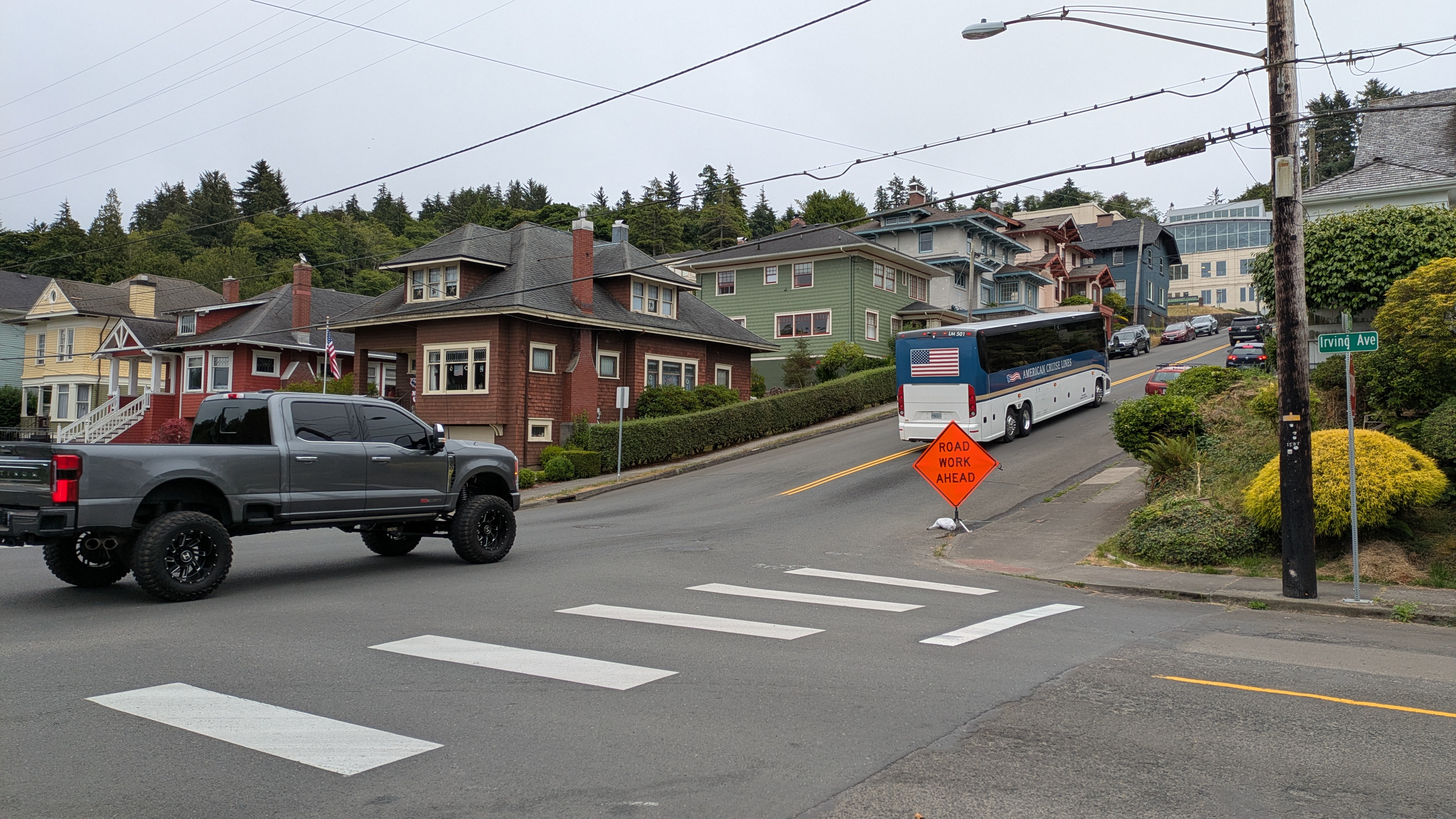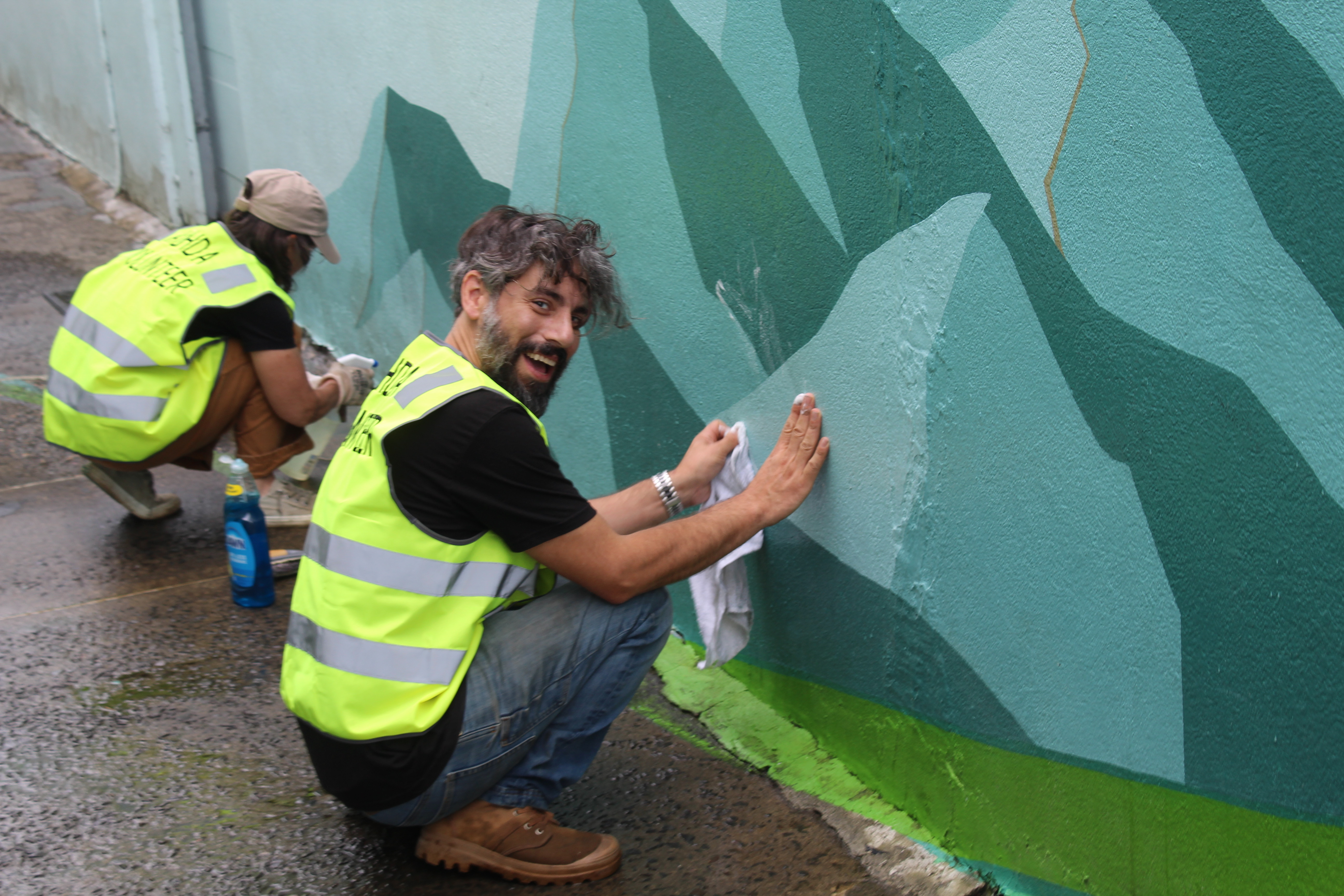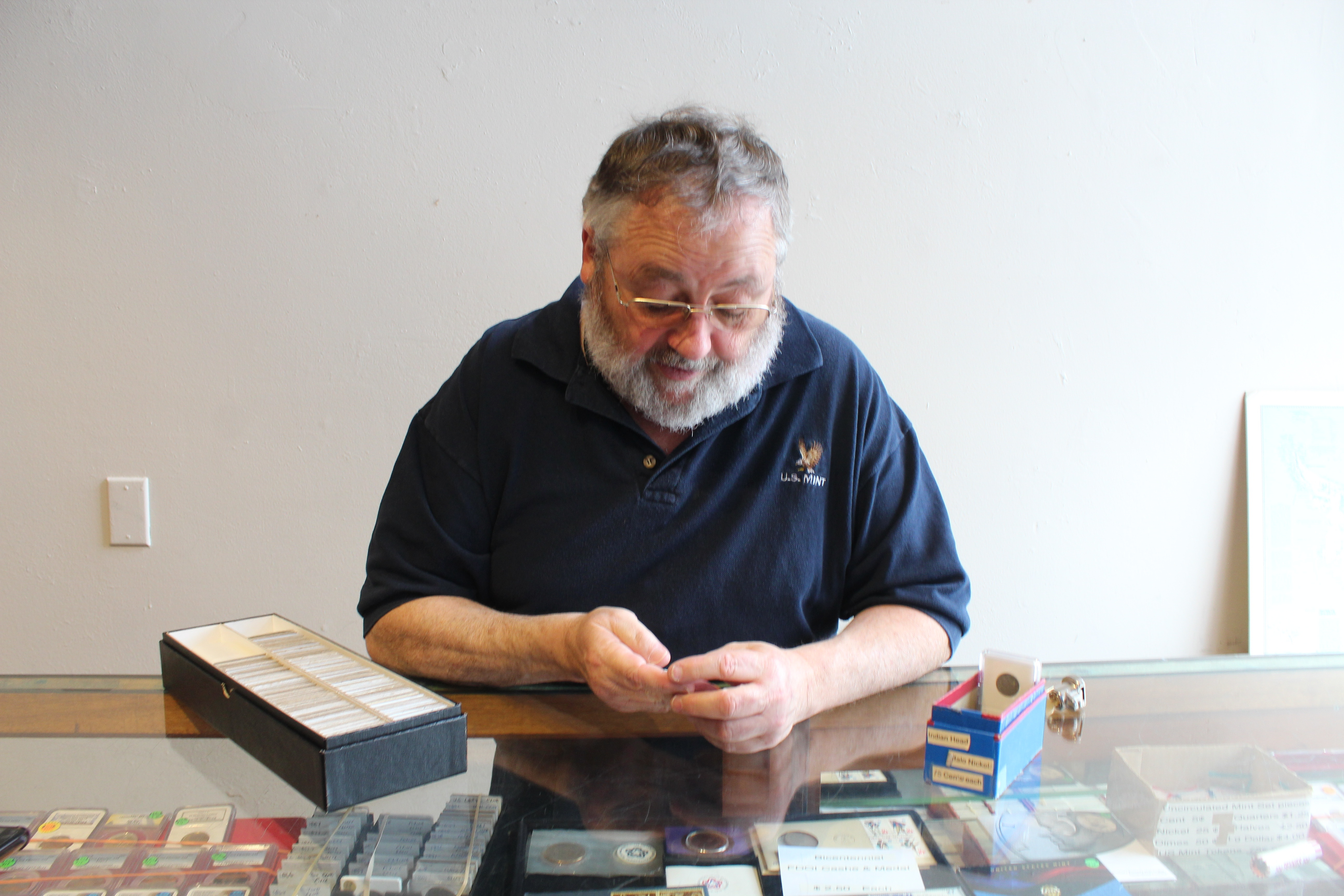Out of the ashes: Astoria’s auto row
Published 1:00 pm Friday, October 27, 2023

- The Sovey Building, as seen in the 1950s.
Driving down Duane Street in Astoria, chances are you’re looking for a bite to eat, coffee, maybe a beer, but 100 years ago, this was where you would have gone for all your automobile needs.
Trending
For a time, Duane Street was known as automobile row. While many are familiar with the household name, Lovell Auto Co. — its history wrapped into the Fort George Brewery empire on Duane between 14th and 15th streets — many would never know that just down the block, less-assuming buildings were crafted to house dealerships, garages, repair and tire shops.
One of those was the Sovey Motor Co. building, a space that now houses the Munktiki gallery and Dead Man’s Isle bar.
While it’s not obvious that the single-story building, with its recessed retail entry, was originally an auto showroom, visitors may be delighted to know that they may be enjoying their dinner in the same location where a bright and shiny 1927 Dodge Bros. Fast Four once beckoned Astorians to buy into the age of the modern automobile.
Trending
Clues to Astoria’s auto history and auto row are sprinkled throughout its main streets.
Before cars, the hearty folk of Astoria relied either on horses or their own two feet. Early roads in the city were planked with wood, but most were unpaved, rutty and fairly muddy.
In 1888, a streetcar line was officially established, connecting Astoria’s Uppertown neighborhood to its downtown, then later on to Uniontown. The streetcar was horse-pulled until 1892 when electric trolley service began.
Around that time, the first American automobile was designed by two bike mechanics in Springfield, Massachusetts. The gas-powered vehicle hit the market in 1896. Before long, automobiles made their way to Astoria.
The first car in Astoria, a 1903 Rambler, belonged to brothers Ferdinand and Augustus Fisher, whose Italianate mansion at 12th and Grand streets was also the location of Astoria’s first garage.
Sherman Lovell was early to the scene, founding Lovell Auto Co. in 1910 opposite his father’s foundry on the northeast corner of Franklin and 18th streets. Lovell became the first agent in Astoria to represent Ford Motor Co.
By 1920, Duane Street was lined with automobile dealerships, garages, body shops, tire services, fueling stations, supply and accessory retail stores. On the south side of Duane between 12th and 13th streets, opposite the Weinhard-Astoria Hotel, Sidney S. Sovey was running and operating Western Motor Car Co., a Buick repair and tire shop.
Lovell and his business partner, Norris Staples, decided to join forces with Sovey under the Western Motor Car and Lovell Auto Co. names, selling Buicks and Dodges.
As the auto industry boomed, tourists began driving their vehicles to visit Astoria and the Oregon Coast. Since the infrastructure was still only really accommodating to foot, horse and rail traffic, those visitors needed places to park their cars.
The three businessmen decided to expand their model and created Astoria Tourist Garage: “Located in a three-floor brick building in the heart of Astoria’s Automobile Row on Duane Street is the Astoria Tourist Garage … devoted exclusively to catering to the tourists and those who desire downtown storage for their cars.”
It turned out that the partnership was not a match and dissolved in March 1922, just two years after it began. Sovey reestablished his business as Sovey Motor Co. and carried on selling Dodge cars, while Lovell and Staples focused on running Lovell Auto Co. out of his building on 14th and Duane.
Fates worked out differently for all three men on Dec. 8, 1922, the night of the Great Astoria Fire.
Sovey’s building burned to the ground. Lovell’s, meanwhile, remained standing due to his tenacity to keep fire officials from purposely razing it to create a fire break, and the tireless efforts of his employees throwing fire extinguishing powder at any encroaching flames. Staples’ heart gave out while he was pushing their inventory of cars up the hill to safety.
The fire destroyed most of Astoria’s downtown buildings, causing the streets to cave in and the streetcar tracks to contort every which way. Streetcars continued to operate on either side of downtown but stopped running in 1924.
That same year, Lovell established a new transportation system for the city: the bus. Rebuilding after the fire, engineers recognized the need to build new infrastructure around the automobile. They designed streets to be considerably wider to make driving and parking more accessible and convenient.
Even beyond downtown, Astoria continued to make auto-related advancements. Highways flanked both ends of the city, inviting tourists to drive through and stop for a bite to eat or stay the night, while paved rural roads made transportation of agricultural goods faster and easier for local farmers.
The need for Astoria’s automobile row pressed on. Showrooms and garages sprang up along both sides of Duane Street. Sovey’s modest one-story building was redesigned in 1923 with a large center showroom window beneath the parapet with a garage door on the left side.
Around the back, a robust concrete ramp, the remnants of which still exist today, allowed vehicles to enter the building from the basement and drive up to the showroom.
Sovey continued selling Dodges in his new building until 1928, when he and his family moved to San Francisco. After his departure, Sovey’s building continued to serve auto-related businesses until the 1930s.
The auto industry proved robust through the Great Depression, but came to a screeching halt for dealerships in 1942 when the manufacturing of consumer vehicles was shut down in favor of war production.
Just two months before the industry froze, Astoria’s automobile row was featured in Fortune magazine, as a sample of how small cities across America could fare during the war.
Edgar Claude Propst, who had set up his Chrysler and Plymouth dealership, Propst Motor Co., in Sovey’s old building, was featured as a newcomer to the auto scene.
Described as “more defiant than disgruntled about the choking off of his stock in trade,” Propst stated that he already had to let go of multiple employees. Propst’s dealership closed shortly after the article was printed.
Astoria’s automobile row never recovered, and its buildings soon adapted to the changing needs of the city. The Duane Street facade of Sovey’s building was transformed into a fashionable retail space — the showroom window removed and stylized into a recessed entry and the garage door replaced with vertical windows.
The building operated as a Sears location for a time, then later an automatic dry cleaner. Today, Astoria’s Duane Street is more recognizable for its breweries, but their repurposed showrooms and garages remain relics of the city’s past.









